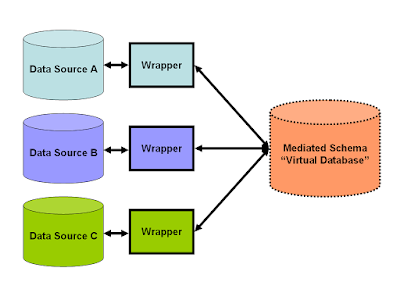Data integration is a combination
of technical and business processes that combines data with meaningful and
valuable information from different sources.
In data integration data is taken
from many different sources (such as files, different databases, mainframes,
etc.) and combining that data to provide a unified view of business
intelligence data.
Data integration is required when
a business decides to implement a new application and migrate its data from
legacy system to new applications. The company becomes critically important
even in the case of merger where two companies merge and their applications
need to be strengthened.
 |
Data Integration Challenges |
However, in this field, as the
progress of data integration, all the requirements and challenges can be
analyzed at the level of data required. There are some challenges to be seen:
Heterogeneous Data: - For most transport agencies, data integration
involves synchronizing a large amount of variables, which is generated from
different heritage systems which differ in data format. The production of an
inherent system is completely different from the traditional database. Unlike
traditional systems, the heirs system keeps adding new data to increase value.
Lack of Storage Space: - While data integrity occurs, there are
many problems related to storage by an agency. If there is not enough space to
store the data, this can cause problems while giving scalability or loyalty to
the data. Therefore, due to the lack of proper storage, the development of
final figures can be disrupted. In addition, adding an additional architecture
can be added to the cost of the firm and can be an expensive deal.
 |
Tips of Data Integration |
Unrealistic Costs: - The cost involved in the integration of data
has increased substantially from those items which are difficult to
quantitatively. There is a special labor cost, while the initial planning,
programming, and evaluation levels start. Cost can be a sudden hit when there
is a sudden unexpected change, and the cost involved in data collection and
maintenance is also.
Lack of Manpower: - With the increase of load per day, limited
number of employees to handle applications can be limited. There can be a
sudden spike in the demand for the manpower and skilled people to fulfill the
demand. The need for skilled personnel depends on the type of project. With the
development of advanced database, the data of the old database has to be taken
up to a newly constructed project.
Michael Usov is a SQL Server and RightFax com API developer who Works with
large civil and property construction firms on their sites to create reports,
data migrations and save time through various automation and currently, working
in MRU Consulting.
If you want to run data integration
process smoothly and get any kind of problem, then you can directly reach out
to us. You can take ideas from me.